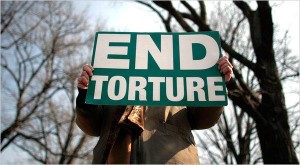By: Kristina Wilson
On Thursday, January 19, 2017, the Fourth Circuit issued a published opinion in the civil case Patterson v. Commissioner of Social Security Administration. The Fourth Circuit reversed and remanded the Administrative Law Judge’s (“ALJ”) denial of the plaintiff’s disability benefits due to his failure to evaluate the plaintiff’s alleged mental impairment according to the “special technique” required by 20 C.F.R. § 404.1520a. The Fourth Circuit held that although failing to follow the special technique does not always necessitate remand, in this case, it was not a harmless error.
Facts and Procedural History
On July 21, 2010, the plaintiff filed her initial application for Social Security benefits. After the Social Security Administration (“SSA”) denied her application, the plaintiff filed a timely request for a hearing on May 12, 2011. The ALJ at the hearing upheld the denial of the plaintiff’s benefits, holding that she was not disabled during the period for which she sought benefits. The ALJ based this determination primarily on the conclusions of one doctor. The SSA conceded that the ALJ failed to follow the appropriate “special technique” protocol outlined in 20 C.F.R. § 404.1520a and that the ALJ failed to consider contradictory medical evidence. The plaintiff then filed suit in district court, but district court sided with the ALJ, stating that substantial evidence supported the ALJ’s findings and that the failure to use the special technique constituted harmless error. The plaintiff appealed from these findings.
The ALJ Failed to Employ the Special Technique
When evaluating a claimant’s alleged mental impairment, an ALJ must follow the special technique. 20 C.F.R. § 404.1520a(a). Under the special technique, an ALJ must evaluate the alleged mental impairment according to four areas of functional limitation including activities of daily living, social functioning, concentration, persistence, or pace, and episodes of decompensation. 20 C.F.R. § 404.1520a(c)(4). The ALJ must rate his findings in the final area, episodes of decompensation, according to a four-point scale. Id. Next, the ALJ determines if the mental impairment is severe and whether it qualifies as a listed impairment. Id. § 404.1520a(d). The regulation requires the ALJ to specifically document all of the steps of the special technique. Id.
Here, the ALJ relied on the findings of only two doctors and did not document the steps of the special technique. Moreover, the record contained evidence that conflicted with the doctors’ findings, but the ALJ did not address the discrepancies. The SSA conceded that the ALJ did not properly apply the special technique and that the doctors’ opinions were not a sufficient surrogate for the special technique.
The Fourth Circuit Cannot Apply the Special Technique
The SSA argues, as a matter of first impression, that the Fourth Circuit can apply the special technique on appeal. If the Fourth Circuit found that the ALJ’s denial of benefits was proper, it could affirm the district court’s opinion. However, the Fourth Circuit disagreed with this argument, stating that the plain language of the special technique statute requires the SSA to apply the special technique. 20 C.F.R. § 404.1520a(e). Therefore, according to the Fourth Circuit, the special technique could not have been intended as nonbinding guidance to aid reviewing courts. The Fourth Circuit further reasoned that the SSA frequently issues such nonbinding guidance, and if it had intended for the special technique to be nonbinding guidance, it would not have engaged in the burdensome regulation promulgation process. Finally, the Fourth Circuit reasoned that failure to apply and properly document the special technique in administrative hearings actually hampers judicial review by obscuring the manner in which the ALJ handled different types of evidence. Thus, the Fourth Circuit concluded that it could not independently apply the special technique.
The Failure to Apply the Special Technique Was Not Harmless Error
Although the failure to apply the special technique does not automatically require remand in every case, the failure in this case was not harmless. The Fourth Circuit stated that the ALJ’s failure to make and support his findings severely hindered judicial review. The Fourth Circuit had no way of knowing how the ALJ evaluated crucial factors such as the plaintiff’s IQ. Moreover, the Fourth Circuit could not ascertain how the ALJ weighed and treated the conflicting evidence. Thus, the Fourth Circuit was unable to say whether substantial evidence supported the ALJ’s findings because the ALJ failed to document and explain his findings according to mandatory procedure.
Conclusion
The Fourth Circuit did not reach the merits of the plaintiff’s application for disability benefits. Instead, it reversed the district court’s findings and remanded the case to the ALJ, directing him to follow the requirements of all applicable regulations.












